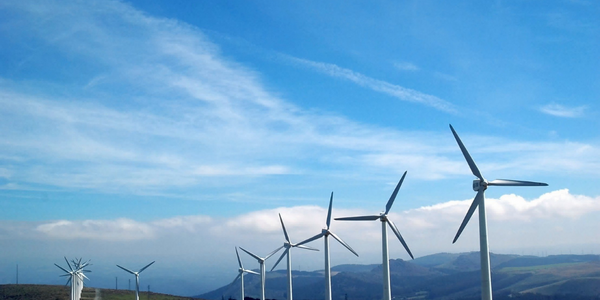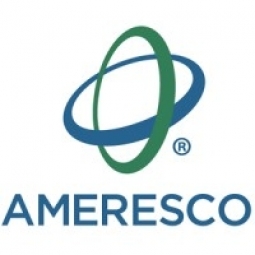Technology Category
- Sensors - Optical Sensors
- Sensors - Utility Meters
Applicable Industries
- Cities & Municipalities
- Renewable Energy
Applicable Functions
- Maintenance
Use Cases
- Smart City Operations
- Smart Lighting
Services
- System Integration
About The Customer
The customer in this case study is the City of Memphis, the second-largest city in Tennessee and the 28th-largest city in the United States in terms of population. The city is in partnership with Memphis Light, Gas and Water (MLGW), the largest three-service public power utility in the nation, serving more than 439,000 customers in Memphis and Shelby County. The city aimed to reduce its energy costs, enhance operations and maintenance capabilities, reduce carbon emissions, and improve streetscape and nighttime visibility in a cost-effective and energy-efficient manner.
The Challenge
The City of Memphis, in partnership with Memphis Light, Gas and Water (MLGW), was faced with the challenge of reducing energy costs citywide while enhancing operations and maintenance capabilities. The city had over 77,000 high-pressure sodium luminaires streetlights that were not energy efficient and required frequent maintenance. The city also aimed to reduce its carbon emissions and improve streetscape and nighttime visibility in a cost-effective and energy-efficient manner. Additionally, the city wanted to create job opportunities for local residents during the construction process and beyond.
The Solution
The city selected Ameresco, a leading cleantech integrator specializing in energy efficiency and renewable energy, to lead a comprehensive LED streetlighting, controls, and networking project. Ameresco will upgrade more than 77,000 citywide streetlights from high-pressure sodium luminaires to LED fixtures. The updated luminaires will be fully controllable through remote monitoring on a secure network capable of additional smart city applications. The project is expected to result in annual energy savings of more than 37 million kWh and reduce greenhouse gas emissions by more than 26,000 metric tons. The energy and operating cost savings will allow the project to pay for itself over the life of the system. Local residents from Memphis and the surrounding communities will be employed to participate in the construction of the streetlighting upgrades.
Operational Impact
Quantitative Benefit

Case Study missing?
Start adding your own!
Register with your work email and create a new case study profile for your business.
Related Case Studies.

Case Study
Turning A Stadium Into A Smart Building
Honeywell created what it called the “intelligent system” for the National Stadium in Beijing, China, turning the venue for the opening and closing events at the 2008 Summer Olympics into a “smart building.” Designed by highly controversial artist Ai Weiwei, the “Bird’s Nest” remains one of the most impressive feats of stadium architecture in the world. The 250,000 square meter structure housed more than 100,000 athletes and spectators at a time. To accommodate such capacity, China turned to Honeywell’s EBI Integrated Building Management System to create an integrated “intelligent system” for improved building security, safety and energy efficiency.

Case Study
Remote Monitoring & Predictive Maintenance App for a Solar Energy System
The maintenance & tracking of various modules was an overhead for the customer due to the huge labor costs involved. Being an advanced solar solutions provider, they wanted to ensure early detection of issues and provide the best-in-class customer experience. Hence they wanted to automate the whole process.

Case Study
Vestas: Turning Climate into Capital with Big Data
Making wind a reliable source of energy depends greatly on the placement of the wind turbines used to produce electricity. Turbulence is a significant factor as it strains turbine components, making them more likely to fail. Vestas wanted to pinpoint the optimal location for wind turbines to maximize power generation and reduce energy costs.

Case Study
Siemens Wind Power
Wind provides clean, renewable energy. The core concept is simple: wind turbines spin blades to generate power. However, today's systems are anything but simple. Modern wind turbines have blades that sweep a 120 meter circle, cost more than 1 million dollars and generate multiple megawatts of power. Each turbine may include up to 1,000 sensors and actuators – integrating strain gages, bearing monitors and power conditioning technology. The turbine can control blade speed and power generation by altering the blade pitch and power extraction. Controlling the turbine is a sophisticated job requiring many cooperating processors closing high-speed loops and implementing intelligent monitoring and optimization algorithms. But the real challenge is integrating these turbines so that they work together. A wind farm may include hundreds of turbines. They are often installed in difficult-to-access locations at sea. The farm must implement a fundamentally and truly distributed control system. Like all power systems, the goal of the farm is to match generation to load. A farm with hundreds of turbines must optimize that load by balancing the loading and generation across a wide geography. Wind, of course, is dynamic. Almost every picture of a wind farm shows a calm sea and a setting sun. But things get challenging when a storm goes through the wind farm. In a storm, the control system must decide how to take energy out of gusts to generate constant power. It must intelligently balance load across many turbines. And a critical consideration is the loading and potential damage to a half-billion-dollar installed asset. This is no environment for a slow or undependable control system. Reliability and performance are crucial.
.png)
Case Study
Smart Street Light Network (Copenhagen)
Key stakeholders are taking a comprehensive approach to rethinking smart city innovation. City leaders have collaborated through partnerships involving government, research institutions and solution providers. The Copenhagen Solutions Lab is one of the leading organizations at the forefront of this movement. By bringing together manufacturers with municipal buyers, the Copenhagen Solutions Lab has catalyzed the development and deployment of next-generation smart city innovations. Copenhagen is leveraging this unique approach to accelerate the implementation of smart city solutions. One of the primary focus areas is LED street lighting.

Case Study
Remote Monitoring and Control for a Windmill Generator
As concerns over global warming continue to grow, green technologies are becoming increasingly popular. Wind turbine companies provide an excellent alternative to burning fossil fuels by harnessing kinetic energy from the wind and converting it into electricity. A typical wind farm may include over 80 wind turbines so efficient and reliable networks to manage and control these installations are imperative. Each wind turbine includes a generator and a variety of serial components such as a water cooler, high voltage transformer, ultrasonic wind sensors, yaw gear, blade bearing, pitch cylinder, and hub controller. All of these components are controlled by a PLC and communicate with the ground host. Due to the total integration of these devices into an Ethernet network, one of our customers in the wind turbine industry needed a serial-to-Ethernet solution that can operate reliably for years without interruption.







